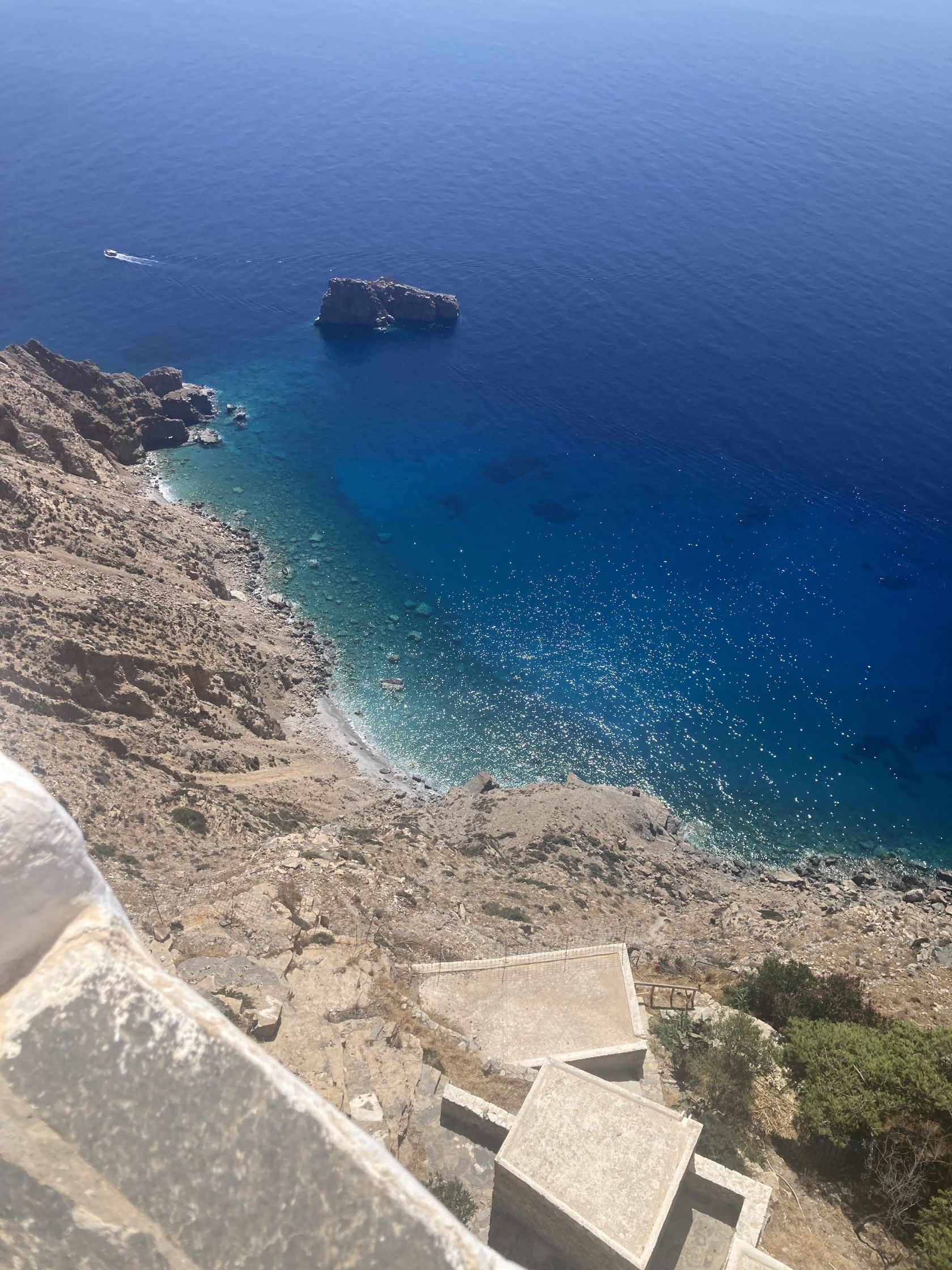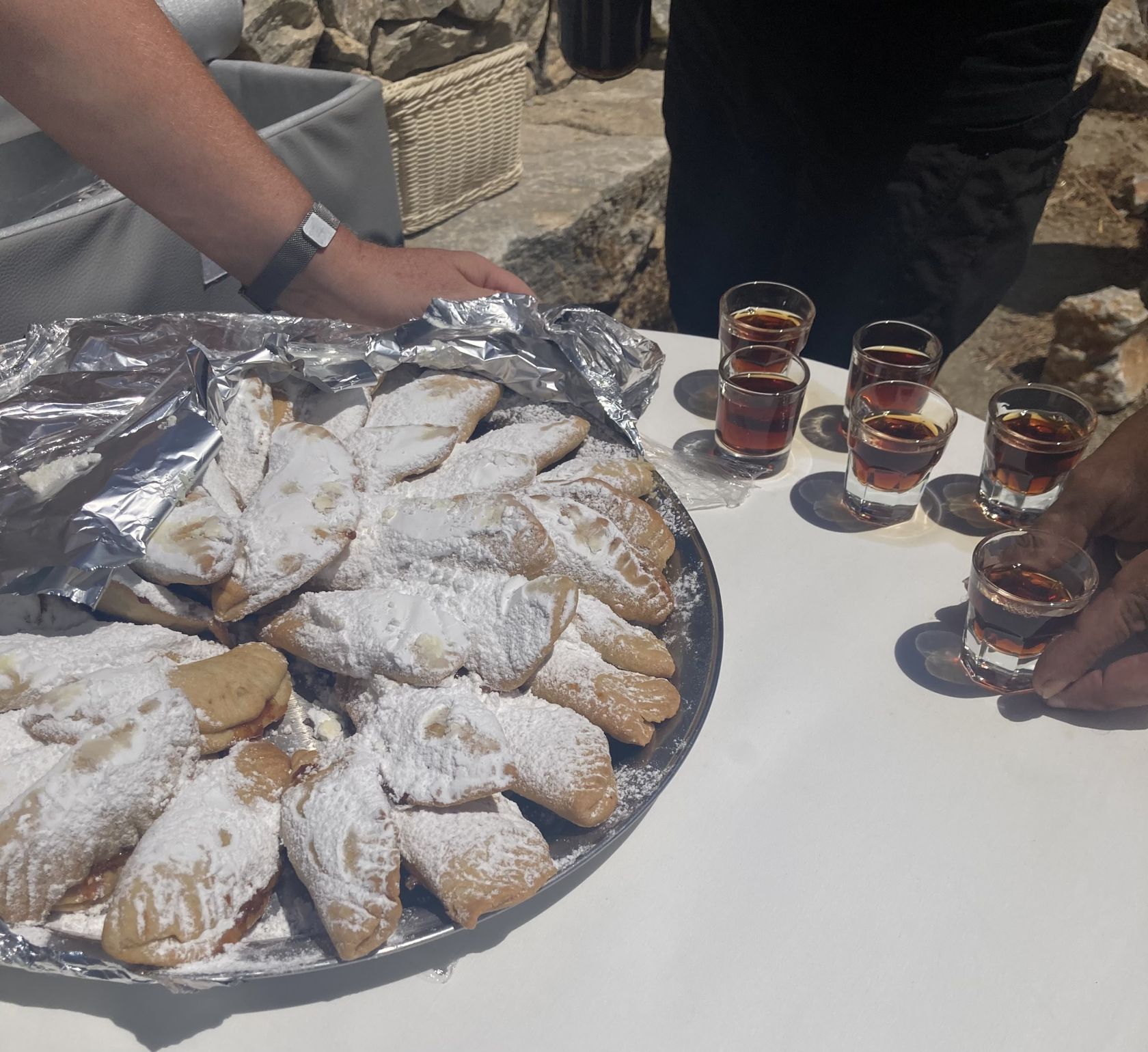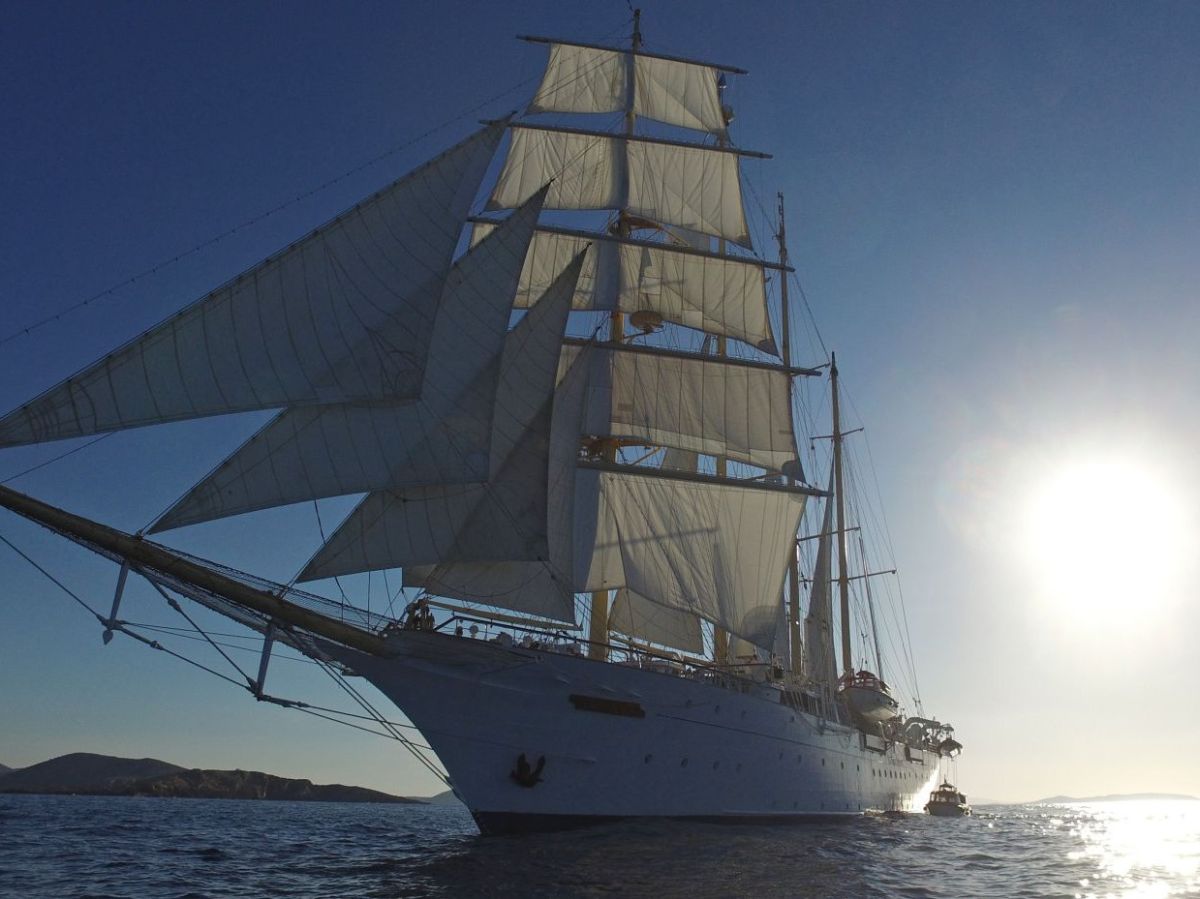Gripping tightly onto the steel sides of the rope ladder, I tell myself the view from the crow’s nest will be worth it.
My 65-feet climb up the Star Clipper ship’s mast has been slow and steady, with a growing crowd gathered on-deck below to watch my progress.
I feel a mixture of relief and pride that I didn’t chicken out halfway up, and can testify that the scenery from the wooden platform at the top – taking in the sprawling blue sea on one side and the port of Kusadasi on the other – is indeed a fitting reward.
The mast climb is one of the many unique opportunities for passengers who choose to travel on this tall ship – a traditional vessel with high masts.
At various points on my seven-day adventure in the Aegean Sea we drop anchor near giant cruise ships – dwarfed by ‘floating hotels’.
I won’t pretend I now have the skills of a sailor, but with a maximum capacity of just 166 passengers, measuring 115 metres in length and with 16 glorious white sails, this tall ship allows those onboard to truly feel they’ve been ‘at-sea’.
If you want 24/7 buffets, casinos and theatrical productions, your best bet is probably one of the big ocean liners. But for the chance to steer the ship, hoist a sail and embark on crowd-free tenders to smaller, lesser-known islands – this is the trip for you.
On day one, during his introductory talk, our cruise director Peter mentions the mast climb, saying: “Without being up there (in the crow’s nest), you haven’t really been onboard.”
These words ring in my ears as I take each careful step up the ladder, secured with a harness should I lose my footing. It’s a far cry from the black and white 1929 film footage we watch on the last night of our week-long trip, showing sailors running up and down the rigging (walking was seen as too slow) in stormy seas.
Climbing the mast is free to do but it’s fair to say you need to be reasonably mobile as some of the rungs are a decent distance apart. Strong-soled shoes are recommended – my cheap trainers just about supported me.
For those who don’t fancy it, there are other ways to get hands-on. I watch as some of the guests shout heave-ho together as they help hoist some of the sails, one telling me afterwards: “It’s harder than it looks!”
The open-door policy on the bridge – where the crew welcome questions about the ship – allows me to get a grip of the steering wheel for a few minutes.
One of the helmsman, Sarath, is patient and kind enough to guide me as an officer consults his navigation screen and shouts coordinates leading me to steer port (left) or starboard (right) in trying to keep the dial in front of me at zero or “midship”.
Most of the nights have been smooth, but during one, with high winds just off Mykonos, it’s a rockier experience and not for the light sleepers or faint-hearted. As a fellow passenger says, “it reminds us we are actually at sea!”

It’s only on the fourth day of my trip that I realise I haven’t set foot on dry land since we boarded – which is testament to the comfort of the ship itself. From lying on a sunlounger on the top deck by the seawater pools, to sipping cocktails at the tropical bar, there is plenty to enjoy.
Teak decks, mahogany railings and blue carpet with knot designs all make for a traditional feel to the ship’s decor.
Bedrooms are cosy but make good use of space to allow for underbed storage for my suitcase and a spacious wardrobe.
We have one full day at sea on our trip – during which I savour the calming influence of the wide blue ocean all around us – and passengers can decide to get off on each of the five stops, taking in some history, shopping or enjoying a trip to a nearby beach for a spot of snorkelling or sunbathing.
The size of our vessel enables us to get into smaller islands, away from the hustle and bustle of bigger ports.
When I finally decide to try out my land legs once more, I don’t do it by halves – climbing around 260 steps to a cliffside monastery in sweltering Greek heat.
The Monastery of Hozoviotissa in Amorgos was built in 1017 and is the second oldest in Greece and, extraordinarily, is built into the side of a cliff. We take a slow and steady winding walk to its entrance, 300 metres above the sea with a view down to the turquoise glistening water below.
Stepping inside to the cooling interior is a relief, and an unexpected extra delight comes in the form of a small glass of the local liquor psimeni raki – which someone rightly claims “tastes like Christmas” thanks to ingredients like cinnamon and clove.

Also on the island, our tour guide offers us a piece of “drunken pie” which resembles mini Cornish pasties. Wine, as the name suggests, is one of the main ingredients, alongside a filling of apricot jam – or whichever fruit happens to be in season at the time – and a dusting of icing sugar.
Greek delicacies form a major part of our trip. One of my favourite dinners is a hearty Greek stew featuring courgette, feta and aubergine with small flatbreads for scooping it all up.
While there is food aplenty, our sailing doesn’t have the feeling of excess that can come from a big cruise with all-day-long buffets.
While I mainly dine onboard, an ice-cream onshore when we stop at Mykonos is a must, as I mosey through the whitewashed streets. But I opt to spend more time on the nearby island of Delos a short boat trip away.
The reputed birthplace of the Greek god Apollo, wandering around some of the carefully excavated ruins is a step back in time, standing amid the beautifully preserved mosaic floors and tall stone pillars.
I noticed people admiring our ship; a tourist on Mykonos’ shore instructing her photographer to ensure the sailboat is in the background of her picture, and a luxurious yacht speeding by with one of its occupants taking snaps from the top deck.
How much of the journey is done by sail and how much by engine power is dependent on weather and being able to stick to schedule, but Star Clippers boasts that some journeys can be done by up to 70% sail – if the stars (excuse the pun) align.
As we marvel from our tenders out at sea at each sail on the ship being raised in the evening sun, the white sails flapping in the breeze between the deep blue of the sea, the majesty of a vessel said to be “reminiscent of the grand age of sail” becomes clear.














